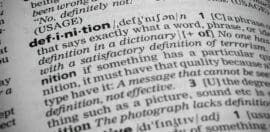The clothing brand bringing together people and their causes

Clothing The Gaps team
5 May 2021 at 8:08 am
Clothing The Gaps is an Aboriginal-owned fashion brand uniting people of all backgrounds to wear their values on their tees, writes Maggie Coggan in this month’s Spotlight on social enterprise.
The Closing the Gap campaign was launched nearly 15 years ago – providing a roadmap for governments, peak Aboriginal and non-Aboriginal health bodies, community, and human rights organisations to achieve equality in health and life expectancy for First Nations peoples by 2030.
In 2021, many of these targets are still far from being met. It’s one of the reasons Gunditjmarra woman Laura Thompson, and non-Indigenous co-founder Sarah Sheridan, started Clothing The Gaps.
The pair set up the social enterprise to support the work of their Aboriginal health promotion NFP, Spark Health, selling a small range of “Spark Merch” t-shirts and singlets.
In 2018, Spark Merch merged into Clothing The Gap (now Closing the Gaps), presenting a way to unite Aboriginal and non-Aboriginal people through fashion and causes, including helping to close the gap between Aboriginal and Torres Strait Islander peoples and non-Indigenous Australians.
The enterprise sells a range of clothing and accessories including t-shirts, jumpers, reusable coffee cups and hats, branded with slogans such as “Always was Always Will Be” or “Free the Flag” – a message that’s connected to a larger campaign a larger campaign being led by Closing the Gaps regarding the copyright of the Aboriginal flag.
All profits from this merchandise go back into supporting the Clothing The Gaps Foundation, a charity that runs health promotion and education activities such as fun runs in Aboriginal communities.
But in the short time the brand has been around, it’s come up against some serious challenges. At the end of April, the Aboriginal owned and led enterprise announced it would rebrand as Clothing The Gaps by the end of July following a two year-long trademark battle with US clothing brand Gap over the use of “gap” in their name.
Despite this hurdle, Thompson said that the name change actually supported their ethos that there was more than one gap to fill to ensure prosperity for Aboriginal communities in Australia. This is something that has been reflected in their evolving business model.
Thompson told Pro Bono News that one of the most important aspects of the business today was the number of Aboriginal and Torres Strait Islander people they employed.
“We have 24 staff and 21 of them are Aboriginal, which is awesome,” Thompson said.
“We’ve grown up seeing Aboriginal community controlled health services being the biggest employer of Aboriginal people. Now we’re starting to see this shift where we are taking control of our own economic security because the business world is now possible for them.”
Sparking social change through clothing
Pumping money into health programs and providing jobs for Aboriginal and Torres Strait Islander peoples aren’t the only ways the enterprise is making a difference.
Sheridan told Pro Bono News that Clothing The Gaps products give people an easy way to demonstrate their values, and spark conversations.
“We’re all essentially walking billboards. People choose to advertise brands like Nike all the time,” she said.
“So when you swap that out to something that actually means something and that starts a conversation with somebody, it’s pretty incredible.”
Thompson said that because Clothing the Gaps had always been about supporting social outcomes, purpose always came first.
“When it comes to our designs, we start with the message first, and design second,” she said.
“Sarah and I are both public health advocates and found ourselves in a fashion brand, but what we’ve really found ourselves in is [creating] messaging and marketing for a brand that is so powerful.”
Thompson also noted that an important part of what the brand had achieved was the number of non-Indigenous people who now felt comfortable wearing Aboriginal messages on their clothes.
She said what really made the difference was the brand’s work signifying to non-Aboriginal people exactly how they could show their allyship in a respectful way. They did this via blog posts and by labelling products either “Ally Friendly” (for non-Aboriginal customers) or “Mob Only” (Aboriginal customers).
“There were so many allies just waiting for permission to be able to step into this space,” Thompson said.
“It just shows that Clothing The Gaps was able to provide a space and permission… to the non-Indigenous community to support Aboriginal people and social causes.”
Growing and learning
Clothing the Gaps has only now ticked over 12 official months, but Thompson and Sheridan have big plans on the horizon.
The business is about to launch its first “Mob Only” collection, focusing on Aboriginal identity and challenging stereotypes about Aboriginal people. It’s also currently undergoing its Social Traders and B Corp Certification, something Thompson said would help solidify the work they had already been doing.
“It was just quite a natural alignment that we were already a social enterprise but we weren’t calling ourselves that,” she said.
“So to be able to solidify ourselves as a social enterprise in the work that we do just makes sense.”
In terms of financial stability, Sheridan said it was something they were slowly but surely working towards.
“We are still so young and we have got so much internal growing to do in terms of backing up all of the external growth that we’ve been through in the past 12 months,” Sheridan said.
Thompson added however that taking some staff off of casual contracts was a step in the right direction.
“We are now at the point where we are able to take people off casual contracts and put them onto fixed term contracts… so we’re [becoming] more stable,” she said.
“There’s just a huge amount of pressure because the amount of sales we generate automatically determines what our roster looks like.”
Activism beyond the moment
A key moment for Clothing The Gaps in the past 12 months was seeing the men and women’s AFL teams sign onto the Free the Flag campaign, with Thompson describing it as a “feat that not many people had achieved”.
“Seeing Eddie Betts run off the ground and put his Free the Flag shirt on was a very special moment for us,” she said.
“As well as that, in the Indigenous round, seeing Traditional Owners from all over the country put their Free the Flag shirts on and welcome people to their country, was a very special moment. It was really nice to know that we had Elders supporting us.”
A difficulty the brand is now faced with is keeping up momentum on these issues.
“The flag’s still not free, so for anyone that is sick of having the Free the Flag conversation, congratulations, so are we,” Sheridan said.
“Choosing when you advocate on something and when you choose to be bored of it is just the height of privilege.”
Thompson noted that while many of Clothing The Gaps customers showed their support beyond just buying a shirt, learning how to understand and manage “trend purchasing” was also proving to be a challenge.
“We need to understand yearly trends of sales, because we saw a massive spike in sales during NAIDOC week and just before a rally, but then sales dropped right down again,” she said.
“Having and creating those conversations on our platform is really important… and making people think about how we can talk about this all the time – not just at the rally, and making sure that people really own their Black wardrobe.
“It’s about asking those questions like what does it look like if we decolonise our wardrobes?”
Check out Clothing The Gaps online store here, and if you are based in Melbourne, you can visit their physical shop here.







